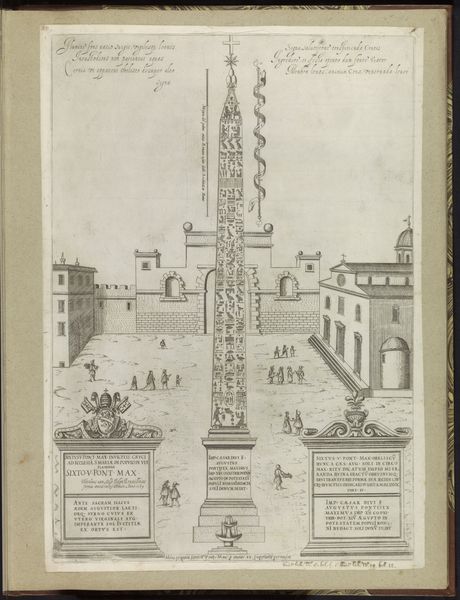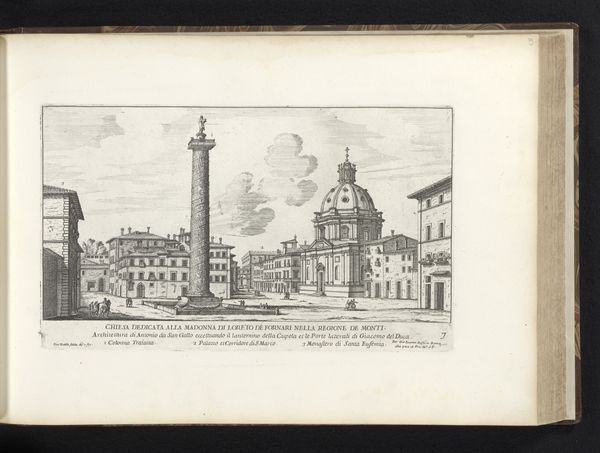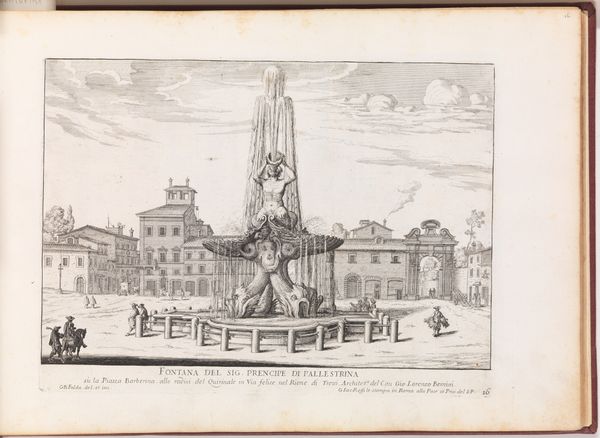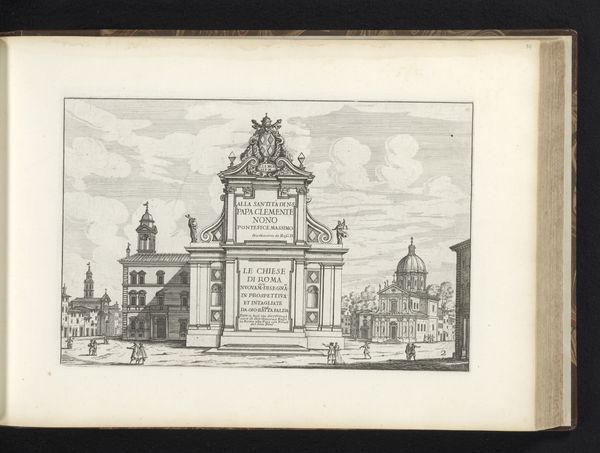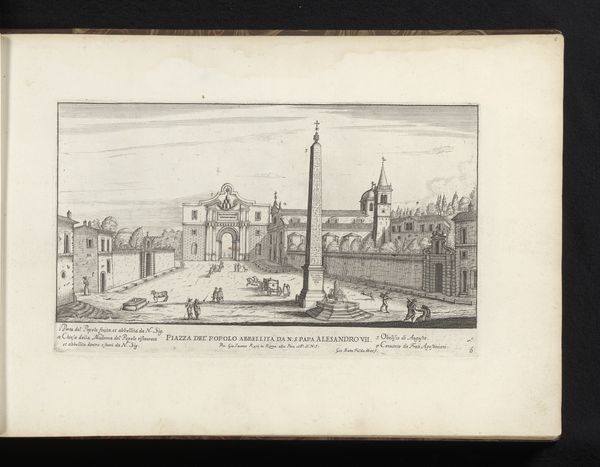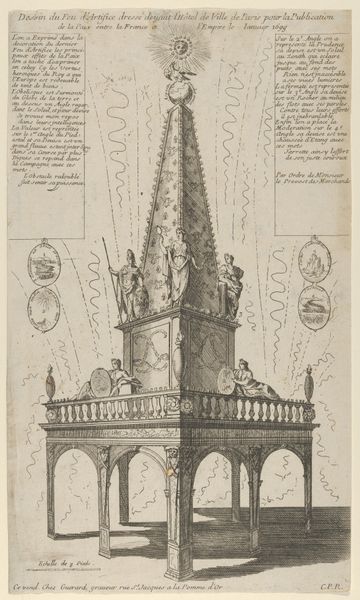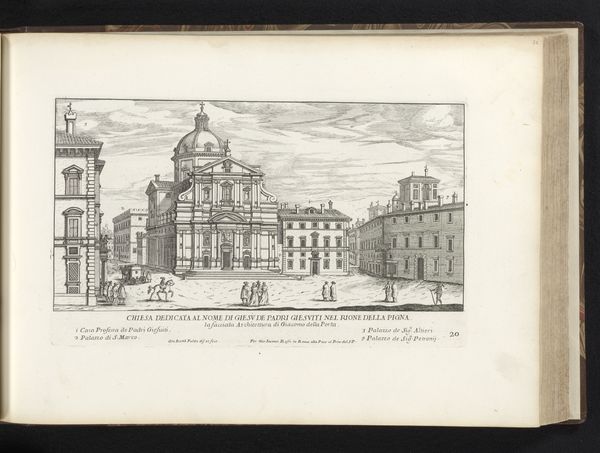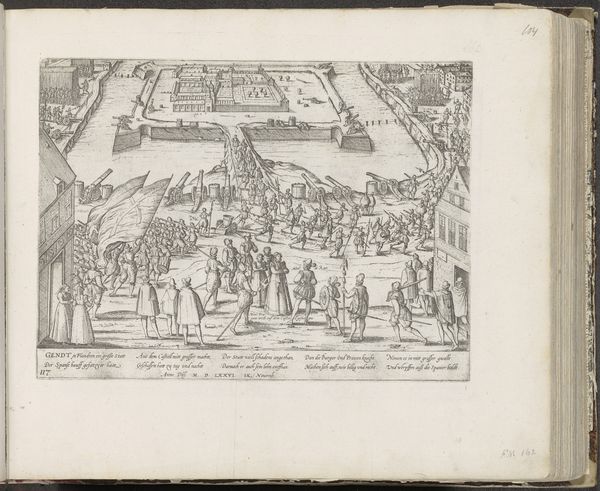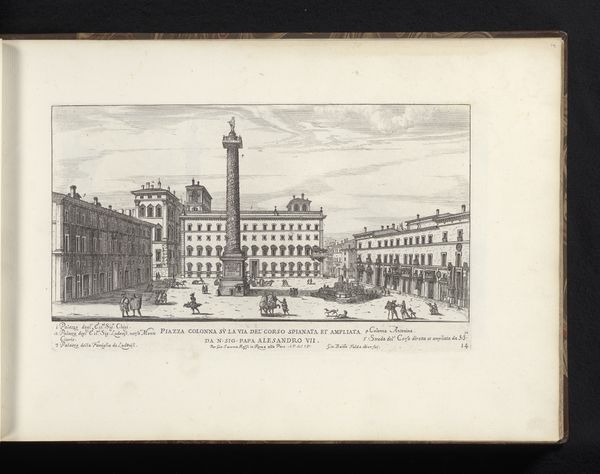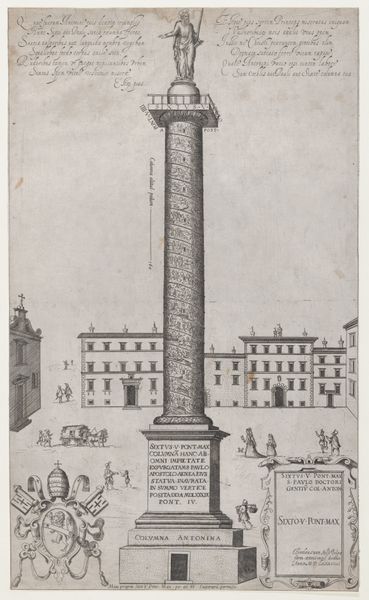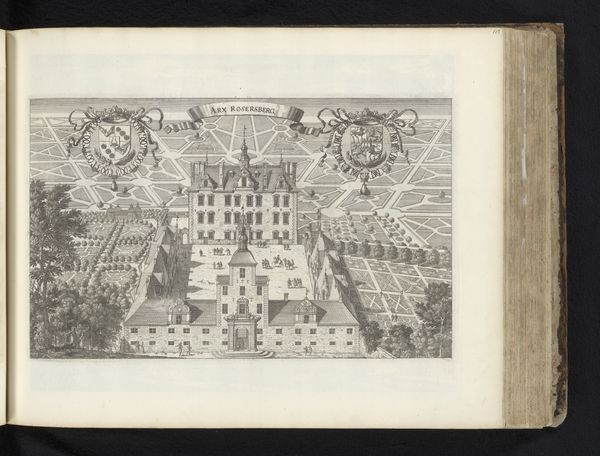
drawing, paper, ink, engraving
#
drawing
#
pen sketch
#
perspective
#
paper
#
11_renaissance
#
ink
#
cityscape
#
italian-renaissance
#
engraving
Dimensions: height 530 mm, width 367 mm
Copyright: Rijks Museum: Open Domain
Editor: So this is an engraving, "Egyptian Obelisk on the Piazza dell'Esquilino in Rome" made in 1589. It's quite striking. The obelisk dominates the cityscape. I'm wondering, how do you interpret the symbolic weight of transplanting an Egyptian obelisk into a Roman square? Curator: Ah, an excellent question. It's crucial to remember obelisks themselves are deeply symbolic, representing the sun god Ra in ancient Egypt. What happens when you move such a potent symbol, charged with solar power and pharaonic authority, to the heart of Christendom? Editor: It feels like a statement, maybe about power, or cultural dominance? Curator: Precisely. In Rome, the obelisk becomes a trophy, a visible sign of Rome’s triumph, of the continuity of empire, but now under the auspices of the papacy. See how it's surmounted by a cross? This act of repurposing, recoding, what does that signify to you? Editor: Like the Church is asserting its dominion, supplanting ancient pagan beliefs with Christianity. Curator: Yes. This appropriation and adaptation speak volumes about cultural memory and how societies reinvent symbols to legitimize their own narratives. Does that alter how you perceive the image now? Editor: Definitely, it's not just a pretty cityscape, but a visual argument about power, history, and the way cultures interact and adapt symbols. Curator: Indeed, understanding the loaded history behind even seemingly simple images allows us to unravel the complex layers of meaning embedded within our shared visual culture. Editor: This makes me appreciate the choices behind this engraving all the more.
Comments
No comments
Be the first to comment and join the conversation on the ultimate creative platform.

